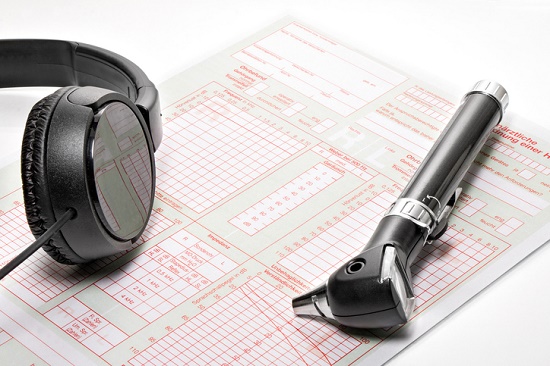
The hearing exam really is the easy part. The challenging part is acknowledging your hearing loss and actually setting up the hearing test in the first place.
You have probably read the stats by now: 48 million people in the United States have hearing loss but only a minor fraction actually do anything about it, and only 20 percent of those who would benefit from hearing aids actually make use of them.
So if you’ve already arranged your hearing test, well done, you’ve already conquered the biggest hindrance to healthier hearing.
The hearing test, as you’ll see, is a simple and easy, non-invasive procedure that will identify the extent of your hearing loss to help institute the most suited method of treatment.
After you initially arrive at the office, you’ll start by completing some paperwork. Then, you’ll consult with your hearing care professional to talk about your hearing health history.
Your Hearing Health History
Your hearing loss, if existing, can be due to exposure to loud sound, the normal aging process, or by an underlying ailment. You’ll want to rule out any underlying medical conditions before proceeding to the actual hearing exam.
If you have an impaction of earwax, for example, you could be hearing better within a few minutes after a professional cleaning. The existence of any other conditions will be evaluated and the appropriate referral made, if required.
After going over your basic medical history, you’ll go over your subjection to loud sounds, your hearing loss symptoms, and what you wish to achieve with better hearing.
It’s very important to determine potential causes, how symptoms are negatively affecting your life, and how better hearing will improve your life, which is after all the entire point. Be leery of the practitioner that doesn’t seem to really care about the reasons why you want to enhance your hearing to begin with.
The Hearing Test
There’s one additional step before starting the hearing test: the visual investigation of the ear with an instrument called an otoscope. This will help rule out any issues with the ear canal, the eardrum, or the excess buildup of earwax.
Next, you’ll be escorted to a sound-treated room with your hearing care professional. You’ll be required to put on headphones, and the specialist will begin to play you some sounds.
You will be presented with a variety of sounds at assorted frequencies, and you’ll be asked to identify the quietest sounds you can hear at each pitch. This is labeled your hearing threshold, and the hearing care provider will log these values on a diagram known as an audiogram.
The hearing exam will probably also include speech testing, where you’ll be asked to repeat the words presented to you. Assorted types of words, delivered at various volumes with and without background noise, will be introduced. This will help confirm if hearing aids can help you with speech understanding.
When the hearing test is completed, your hearing care professional will review the results with you.
Reviewing Your Hearing Test Results
Referencing your audiogram, your hearing care provider will now review your hearing in both ears. Based on the results, your hearing will be characterized as normal or as displaying mild, moderate, severe, or profound hearing loss.
If a hearing loss is found, the next move is talking about your treatment options. Since there are no present medical or surgical treatments to repair hearing damage, this means assessing your hearing aid options.
Modern hearing aids come in a vast array of shapes, sizes, and colors, at different price points with a number of advanced functions and features. In selecting your hearing aids, it’s important to work with a competent hearing care professional for three main reasons:
- They can help you find the best hearing aid model to satisfy all of your objectives.
- They can help you determine the advanced features you need—as well as with the ones you don’t—at a price that suits your budget.
- They can program your new hearing aids to enhance only the sounds you have trouble hearing—identified by the hearing test—ensuring optimal sound quality.
And that’s it, a quick, simple process in exchange for a lifetime of better hearing. We’d say that’s a very good deal.
We look forward to seeing you!